- The Importance of Phytophthora Resistance
- Understanding Phytophthora and Its Impact on Tomato Plants
- How Phytophthora Affects Tomato Plants
- Preventing and Managing Phytophthora Infestations
- Treatment options
- The Consequences of Phytophthora Infection on Tomato Yields
- 1. Reduced Crop Productivity
- 2. Fruit Rot and Quality Issues
- 3. Financial Losses for Growers
- Choosing Phytophthora-resistant Tomato Varieties
- Disease Resistance
- Genetics
- Past Performance
- Regional Adaptability
- Hybrid vs. Heirloom Varieties
- Consulting with Experts
- How to Select the Right Tomato Varieties for Your Growing Conditions
- 1. Climate
- 2. Disease Resistance
- 3. Space and Support
- 4. Taste and Use
- 5. Harvest Time
- 6. Seed Availability
- Conclusion
- Proven Phytophthora-resistant Tomato Varieties and Hybrids
- Cultivating Phytophthora-resistant Tomatoes
- Choosing Phytophthora-resistant Varieties
- Planting and Care
- Additional Disease Prevention Measures
- Conclusion
- Best Practices for Growing and Caring for Phytophthora-resistant Tomatoes
- 1. Selecting Resistant Varieties
- 2. Crop Rotation
- 3. Well-Draining Soil
- 4. Adequate Spacing
- 5. Mulching
- 6. Watering Techniques
- 7. Disease Monitoring
- 8. Proper Sanitation
- 9. Fungicide Application
- 10. Seed Saving and Storage
- Tips for minimizing the Risk of Phytophthora Infection in Tomato Plants
- 1. Select Resistant Tomato Varieties
- 2. Rotate Crops
- 3. Improve Soil Drainage
- 4. Avoid Overhead Watering
- 5. Proper Spacing
- 6. Remove Infected Plants
- 7. Clean Garden Tools
- 8. Practice Good Sanitation
- 9. Monitor and Act Promptly
- “Question-Answer”
- What are some tomato varieties that are resistant to Phytophthora?
- How long have these Phytophthora-resistant tomato varieties been tested?
- Can I grow these Phytophthora-resistant tomato varieties in my garden without worrying about the disease?
- What is Phytophthora and why is it a problem for tomato plants?
- Are there any other ways to prevent Phytophthora in tomato plants?
- “Video” My MOST PRODUCTIVE TOMATO Varieties! [And 4 Varieties To Avoid]
When it comes to growing tomatoes, one of the biggest challenges faced by gardeners around the world is dealing with phytophthora, a devastating plant disease that affects tomatoes and many other crops. Phytophthora is a soil-borne pathogen that can cause wilting, stunted growth, and ultimately death of the plant.
Fortunately, there are tomato varieties and hybrids available that have been proven to be resistant to phytophthora. These plants have been carefully bred to have genetic traits that make them less susceptible to the disease, giving gardeners a better chance at a successful harvest.
1. Mountain Magic
This hybrid tomato was developed specifically for its resistance to phytophthora. It produces a large yield of flavorful tomatoes and is highly resistant to other common diseases, making it a top choice for many gardeners.
2. Iron Lady
Another highly resistant hybrid, Iron Lady is known for its ability to withstand phytophthora as well as other soil-borne diseases. It produces medium-sized, deep red tomatoes with a rich flavor that will impress any tomato lover.
3. Defiant
Defiant is a disease-resistant variety that has been a favorite among gardeners for years. It offers excellent resistance to phytophthora and other diseases, along with a great flavor that is perfect for fresh eating or canning.
4. Legend
Legend is a classic tomato variety that has stood the test of time. It has a strong resistance to phytophthora, as well as other diseases like early blight. Its large, beefsteak-style tomatoes are perfect for slicing and adding to sandwiches and salads.
5. Mountain Merit
Mountain Merit is a hybrid tomato that offers both exceptional disease resistance and fantastic flavor. It is highly resistant to phytophthora and other diseases, and its juicy, flavorful tomatoes are great for slicing and cooking.
6. Mountain Spring
Another reliable hybrid tomato, Mountain Spring has proven its resistance to phytophthora and other diseases time and time again. It produces early, abundant yields of medium-sized tomatoes that are perfect for fresh eating or preserving.
If you’re tired of battling diseases like phytophthora in your tomato garden, consider planting one of these varieties or hybrids. With their proven resistance and fantastic flavor, you’ll be on your way to a successful tomato harvest in no time!
The Importance of Phytophthora Resistance
Phytophthora is a serious plant disease caused by a group of water mold pathogens. It affects a wide range of plants, including tomatoes. The disease can lead to significant yield losses and even complete crop failure. Therefore, cultivating tomatoes with phytophthora resistance is essential for sustainable agriculture.
There are several reasons why phytophthora resistance is important:
- Disease Control: Phytophthora-resistant tomatoes have an inherent ability to withstand or suppress the pathogen, reducing the risk of disease outbreaks in the field. This means fewer infections and less need for chemical fungicides, leading to reduced environmental impact.
- Yield Stability: Phytophthora-resistant varieties and hybrids offer increased yield stability. By avoiding or minimizing disease damage, farmers can achieve more consistent yields year after year, ensuring a steady income and food supply.
- Reduced Production Costs: Managing an outbreak of phytophthora can be expensive due to the need for chemical treatments, labor, and loss of crop value. By growing resistant varieties, growers can save on these costs, making their operations more economically viable.
- Extended Growing Season: Phytophthora-resistant tomatoes can be planted earlier in the season and harvested later, as they are less susceptible to disease. This allows for a longer growing season, maximizing the potential for higher yields and profits.
- Increased Crop Quality: Phytophthora-resistant tomatoes are healthier and less affected by disease, resulting in better quality fruits. Consumers can enjoy tastier, more appealing tomatoes, while producers can benefit from improved marketability of their crops.
- Resilience to Environmental Conditions: Phytophthora-resistant varieties have been bred to exhibit tolerance to a range of environmental conditions, including temperature, humidity, and soil types. This makes them more adaptable to various growing regions, reducing the risk of disease outbreaks in different climates.
In conclusion, selecting and growing tomatoes with phytophthora resistance is crucial for sustainable agriculture. It offers numerous benefits, including disease control, yield stability, reduced production costs, extended growing season, increased crop quality, and resilience to environmental conditions. By prioritizing phytophthora resistance, farmers can improve their productivity, profitability, and environmental stewardship.
Understanding Phytophthora and Its Impact on Tomato Plants
Phytophthora is a destructive plant pathogen that affects a wide range of crops, including tomatoes. It is a type of water mold that thrives in wet and humid conditions, making it a common problem for tomato growers, particularly in regions with high rainfall or irrigation. Phytophthora can cause severe damage to tomato plants, leading to reduced yields and even crop loss.
How Phytophthora Affects Tomato Plants
When a tomato plant becomes infected with Phytophthora, the pathogen attacks the plant’s roots and stem. It produces spores that can spread through water, soil, or even on contaminated tools or equipment. These spores can remain viable for long periods, making it easy for the pathogen to spread and infect other plants.
Once inside the plant, Phytophthora begins to destroy the cells and tissues, leading to rotting and decay. The plant’s ability to absorb water and nutrients is compromised, resulting in wilting, stunted growth, and yellowing of leaves. If left untreated, the plant may eventually die.
Preventing and Managing Phytophthora Infestations
Preventing Phytophthora infestations in tomato plants is crucial for ensuring healthy and productive crops. Here are some strategies to consider:
- Plant Resistant Varieties: Choose tomato varieties that have been bred for Phytophthora resistance. These varieties have genetic traits that make them less susceptible to the disease.
- Rotating Crops: Avoid planting tomatoes and other related crops in the same location year after year. Instead, practice crop rotation to disrupt the disease cycle and reduce the build-up of pathogens in the soil.
- Proper Irrigation: Avoid over-watering your tomato plants, as excess moisture creates favorable conditions for Phytophthora. Use drip irrigation or soaker hoses instead of overhead sprinklers to minimize wetness on the foliage.
- Good Drainage: Ensure that your planting area has proper drainage to prevent water from pooling around the plants. This will help reduce the risk of Phytophthora infection.
- Sanitation: Clean and disinfect gardening tools, equipment, and containers regularly to prevent the spread of the pathogen. Remove and destroy any infected plant debris to eliminate potential sources of infection.
Treatment options
If your tomato plants do get infected with Phytophthora, there are limited treatment options available. It’s best to consult with a local agricultural extension service or plant pathologist for advice on the most suitable treatment for your specific situation. In some cases, removing and destroying the infected plants may be the most effective way to prevent further spread of the disease.
To summarize, Phytophthora is a serious threat to tomato plants, causing rotting, wilting, and reduced yields. Preventative measures such as planting resistant varieties, practicing crop rotation, and implementing proper irrigation and sanitation practices can help reduce the risk of infection. If your plants do become infected, seeking professional advice and promptly removing affected plants can minimize the spread of the disease.
The Consequences of Phytophthora Infection on Tomato Yields
Phytophthora is a devastating plant pathogen that affects a wide range of crops, including tomatoes. This fungal-like organism causes root and stem rot, resulting in significant yield loss and economic impact for tomato growers.
1. Reduced Crop Productivity
A tomato plant infected with Phytophthora experiences a decline in overall growth and vigor. The pathogen attacks the plant’s root system, reducing its ability to take up water and nutrients from the soil. As a result, the plant becomes weak and stunted, leading to a decrease in fruit production.
Furthermore, Phytophthora can infect the stems of tomato plants, causing rotting and wilting. This, in turn, hampers the transport of water and nutrients to the leaves and fruits, further diminishing the plant’s productivity.
2. Fruit Rot and Quality Issues
Phytophthora infection often leads to fruit rot, which can occur both in the field and during post-harvest storage. The pathogen infects the fruit through wounds or natural openings, such as the calyx or stem scar. Once inside the fruit, Phytophthora causes browning, softening, and decay, rendering it unsuitable for consumption or commercial use.
Even if the fruit does not show visible signs of rot, it may still suffer from quality issues. Phytophthora-infected tomatoes often have a reduced shelf life, as they are more susceptible to secondary infection by other pathogens. Additionally, the fruit may develop a bitter taste or an unpleasant odor, further decreasing its market value.
3. Financial Losses for Growers
Due to the significant impact on crop productivity and fruit quality, Phytophthora infection can result in substantial financial losses for tomato growers. The decrease in yield reduces the amount of marketable fruit available for sale, leading to lower profits.
Furthermore, growers may incur additional costs in managing and controlling Phytophthora, such as the application of fungicides and implementing preventive measures. These efforts aim to minimize the spread of the pathogen and protect uninfected plants, but they can contribute to increased production expenses.
Overall, Phythophthora infection represents a significant threat to tomato yields and the economic viability of tomato farming. Understanding the consequences of this pathogen’s presence is crucial for implementing effective management strategies and developing resistant tomato varieties.
Choosing Phytophthora-resistant Tomato Varieties
Phytophthora is a common disease that affects tomatoes, causing significant damage to the plants and reducing yields. Choosing phytophthora-resistant tomato varieties is essential to minimize the risk of infection and ensure healthy plant growth. Here are some factors to consider when selecting resistant varieties:
Disease Resistance
The primary factor to consider is the level of resistance a tomato variety offers against phytophthora. Look for varieties that are specifically bred or selected for their resistance to the disease. These varieties are more likely to withstand infection and continue to produce healthy fruits even in the presence of phytophthora.
Genetics
Understanding the genetic background of a tomato variety can provide valuable insights into its resistance to phytophthora. Some varieties may possess specific genes that make them more resistant to the disease. Look for varieties that have been bred from parent plants with proven resistance to phytophthora.
Past Performance
Consider the past performance of different tomato varieties in relation to phytophthora. Check for reviews, recommendations, and testimonials from other gardeners or farmers who have grown these varieties. Their experiences can give you an idea of how well a particular variety has performed in real-world conditions.
Regional Adaptability
Tomato varieties may have different levels of resistance to phytophthora depending on the region where they are grown. Some varieties may be specifically bred for certain geographic areas that are more prone to phytophthora outbreaks. Research and choose varieties that are known to perform well in your area and offer resistance to local populations of the disease.
Hybrid vs. Heirloom Varieties
Both hybrid and heirloom tomato varieties can offer resistance to phytophthora, but there are some differences to consider. Hybrid varieties are often bred for specific traits, including disease resistance, and may offer more reliable and consistent protection against phytophthora. Heirloom varieties, on the other hand, may have unique flavors and appearances but may vary in disease resistance.
Consulting with Experts
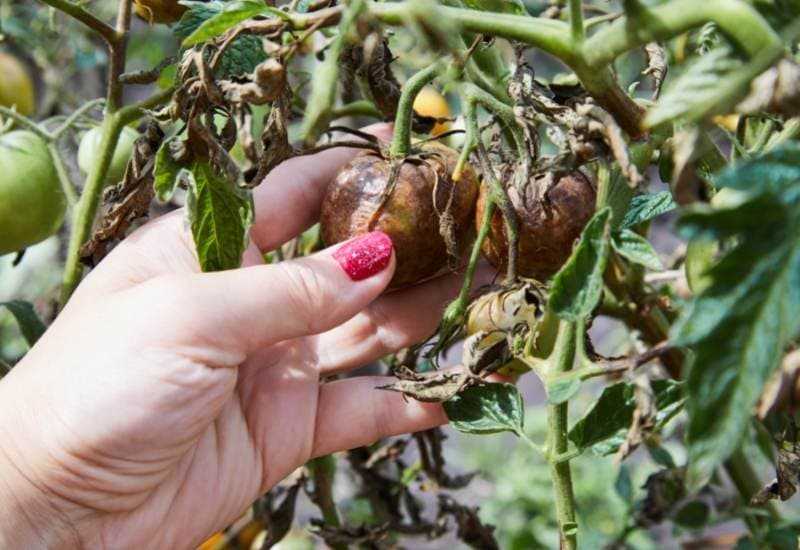
If you are unsure about which phytophthora-resistant tomato varieties to choose, consider consulting with experts in the field of plant genetics or horticulture. They can provide tailored advice based on your specific needs and growing conditions to help you select the best varieties for your garden.
Remember, choosing phytophthora-resistant tomato varieties is an important step towards protecting your plants and ensuring a successful harvest. By considering factors such as disease resistance, genetics, past performance, regional adaptability, and the choice between hybrid and heirloom varieties, you can make an informed decision and enjoy healthy, productive tomato plants.
How to Select the Right Tomato Varieties for Your Growing Conditions
Choosing the right tomato varieties for your growing conditions is crucial to ensure a successful and productive harvest. Here are some factors to consider when selecting tomato varieties:
1. Climate
Tomatoes have different climate preferences, so it’s important to choose varieties that are well-suited to your specific growing conditions. Consider the average temperature, humidity levels, and length of your growing season. Some varieties are better suited for hot and humid climates, while others thrive in cooler and drier conditions.
2. Disease Resistance
Tomatoes are susceptible to various diseases, including phytophthora. Look for varieties that are resistant to common tomato diseases in your area. Resistance to phytophthora is especially important if you have a history of this disease in your garden.
3. Space and Support
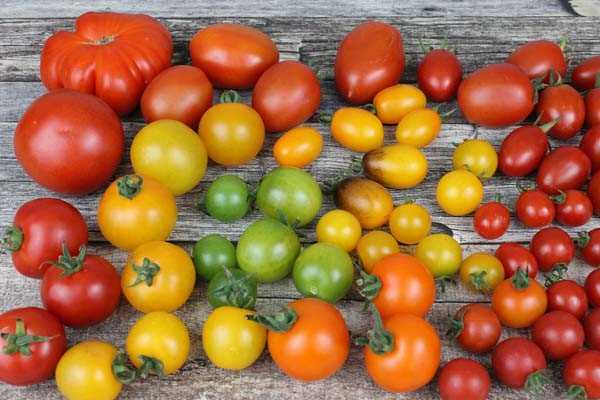
Consider the amount of space you have available for tomato plants. Some varieties are more compact and suitable for smaller gardens or containers, while others require more space to spread out. Additionally, think about whether you have a suitable support system for indeterminate varieties that will continue to grow and produce throughout the season.
4. Taste and Use
Don’t forget to consider your personal taste preferences and how you plan to use the tomatoes. Some varieties are known for their exceptional flavor and are best eaten fresh, while others are more suitable for canning or cooking. Take into account the size, color, and texture of the tomatoes as well.
5. Harvest Time
Different tomato varieties have different maturation times. Consider how soon you want to start harvesting and the length of your growing season. Look for early-maturing varieties if you have a short growing season or if you want to enjoy fresh tomatoes as soon as possible.
6. Seed Availability
Lastly, check the availability of seeds for the desired tomato varieties. Some heirloom and rare varieties may be harder to find, while others are widely available. It’s a good idea to plan ahead and order seeds early to ensure you can get the varieties you want.
Conclusion
By considering factors such as climate, disease resistance, space, taste, harvest time, and seed availability, you can select the right tomato varieties that will thrive in your specific growing conditions. Remember to do some research and experiment with different varieties to find the ones that work best for you.
Proven Phytophthora-resistant Tomato Varieties and Hybrids
Mountain Magic: This variety has consistently shown resistance to Phytophthora. It’s small, round fruits have a great taste and are perfect for fresh consumption.
Magnus: Known for its excellent resistance to Phytophthora, Magnus is a mid-sized tomato with a deep red color and a classic tomato flavor.
Ferosa: Ferosa is a hybrid tomato that has proven to be highly resistant to Phytophthora. It produces large, firm fruits that are perfect for slicing or making sauces.
Mountain Merit: This disease-resistant variety produces large, flavorful tomatoes that are resistant to several tomato diseases, including Phytophthora.
Juliet: Juliet is a cherry tomato hybrid that has been shown to have good resistance against Phytophthora. It produces an abundance of sweet, grape-like fruits that are perfect for snacking.
Defiant: Defiant is a determinate tomato variety that has been bred specifically for its resistance to multiple diseases, including Phytophthora. It has a balanced flavor and is great for slicing or canning.
These Phytophthora-resistant tomato varieties and hybrids have been proven over time to withstand the disease, making them reliable choices for growers looking to combat this common tomato pathogen.
Cultivating Phytophthora-resistant Tomatoes
Phytophthora is a devastating disease that affects tomato plants, causing significant yield losses. However, there are several tomato varieties and hybrids that have proven to be resistant to Phytophthora over time. By cultivating these resistant tomatoes, growers can minimize the risk of crop loss and ensure a successful harvest.
Choosing Phytophthora-resistant Varieties
When selecting tomato varieties for cultivation, it’s important to choose those that have a proven resistance to Phytophthora. Some popular varieties that exhibit resistance include:
- Roma VF
- Amelia
- San Marzano
- Magnus
- Mountain Magic
- Iron Lady
These varieties have demonstrated a high level of resistance to Phytophthora and are well-suited for cultivation in areas where the disease is prevalent.
Planting and Care
It’s important to follow proper planting and care practices to maximize the resistance of these tomato varieties to Phytophthora. Here are some key considerations:
- Plant in well-draining soil to reduce the risk of waterlogged conditions that can encourage the development of Phytophthora.
- Space plants adequately to promote good air circulation and reduce humidity, which can also contribute to disease development.
- Apply a layer of mulch around the plants to help conserve moisture and suppress weed growth.
- Monitor the plants regularly for any signs of disease and remove any infected leaves or fruits immediately to prevent the spread of Phytophthora.
- Properly irrigate the plants, making sure to water at the base and avoid getting the foliage wet, which can create an ideal environment for disease development.
Additional Disease Prevention Measures
In addition to cultivating Phytophthora-resistant tomatoes, there are other measures that can be taken to further prevent the disease:
- Practice crop rotation, avoiding planting tomatoes in the same area for consecutive seasons.
- Sanitize tools, pots, and other equipment to prevent the spread of the disease.
- Monitor and manage any pests that can potentially transmit Phytophthora, such as aphids or nematodes.
- Consider the use of fungicides or biocontrol agents specifically designed to target Phytophthora.
Conclusion
By selecting and cultivating Phytophthora-resistant tomato varieties, implementing proper planting and care practices, and taking additional disease prevention measures, growers can significantly reduce the risk of crop loss due to Phytophthora. This will ultimately lead to a more successful and productive tomato harvest.
Best Practices for Growing and Caring for Phytophthora-resistant Tomatoes
1. Selecting Resistant Varieties
When growing tomatoes that are resistant to Phytophthora, it is essential to choose the right variety. Look for tomatoes specifically bred to have resistance to this disease. These varieties are labeled as Phytophthora-resistant or mention resistance to late blight, which is caused by the Phytophthora infestans fungus.
2. Crop Rotation
Implementing a proper crop rotation plan is crucial for preventing the buildup of Phytophthora in the soil. Rotate your tomato crop with unrelated plants annually, ideally for a period of three to four years. This practice helps break the disease cycle and reduces the risk of infection.
3. Well-Draining Soil
Phytophthora thrives in wet and poorly drained soils. To prevent the disease, ensure your tomato plants are grown in well-draining soil. Consider adding organic matter, such as compost, to improve drainage and soil structure.
4. Adequate Spacing
Proper spacing between tomato plants is important for good air circulation, which helps reduce humidity and prevent the spread of diseases like Phytophthora. Make sure to follow the recommended spacing guidelines for the specific tomato variety you are growing.
5. Mulching
Mulching around your tomato plants can help control soil moisture and reduce splashing of water onto the leaves. Use organic mulch, such as straw or wood chips, to create a barrier between the soil and the plant. This can significantly minimize the risk of Phytophthora infection.
6. Watering Techniques
When watering your tomato plants, it is best to apply water to the base of the plant rather than overhead. This prevents the leaves from getting wet and reduces the chance of Phytophthora spores coming into contact with the foliage.
7. Disease Monitoring
Regularly inspect your tomato plants for any signs of Phytophthora infection, such as wilting, yellowing leaves, and dark brown or black lesions on the stems and fruit. If you suspect an infection, remove and destroy the affected plants immediately to prevent the spread of the disease to other tomatoes.
8. Proper Sanitation
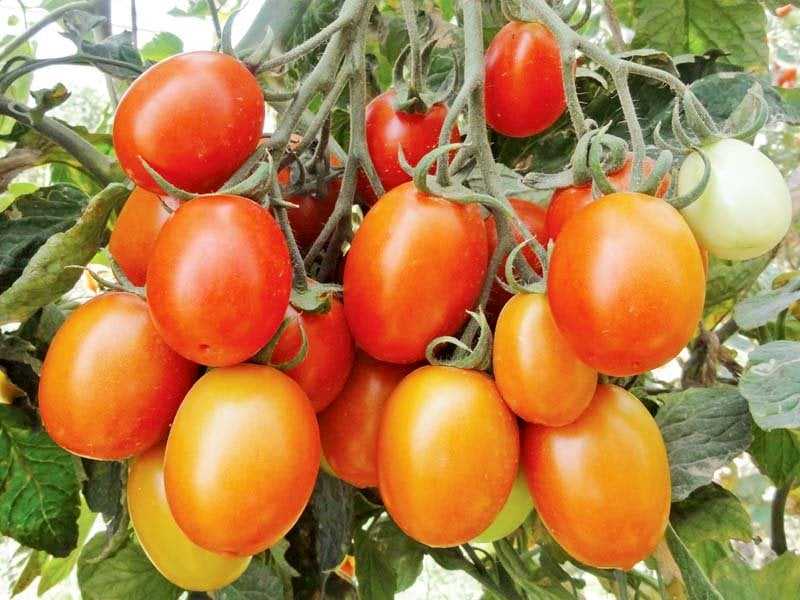
Practice good sanitation measures in your garden to reduce the risk of Phytophthora contamination. Clean garden tools and equipment between uses, avoid working in wet conditions, and remove any plant debris promptly.
9. Fungicide Application
If necessary, consider applying fungicides labeled for controlling Phytophthora. Follow the instructions carefully and apply the recommended fungicides at the appropriate times to provide effective protection against the disease.
10. Seed Saving and Storage
If you are saving tomato seeds, only collect them from disease-free plants. Properly clean and dry the seeds before storing them in a cool, dry place. This ensures healthy seeds for future planting and reduces the risk of introducing Phytophthora into your garden.
Tips for minimizing the Risk of Phytophthora Infection in Tomato Plants
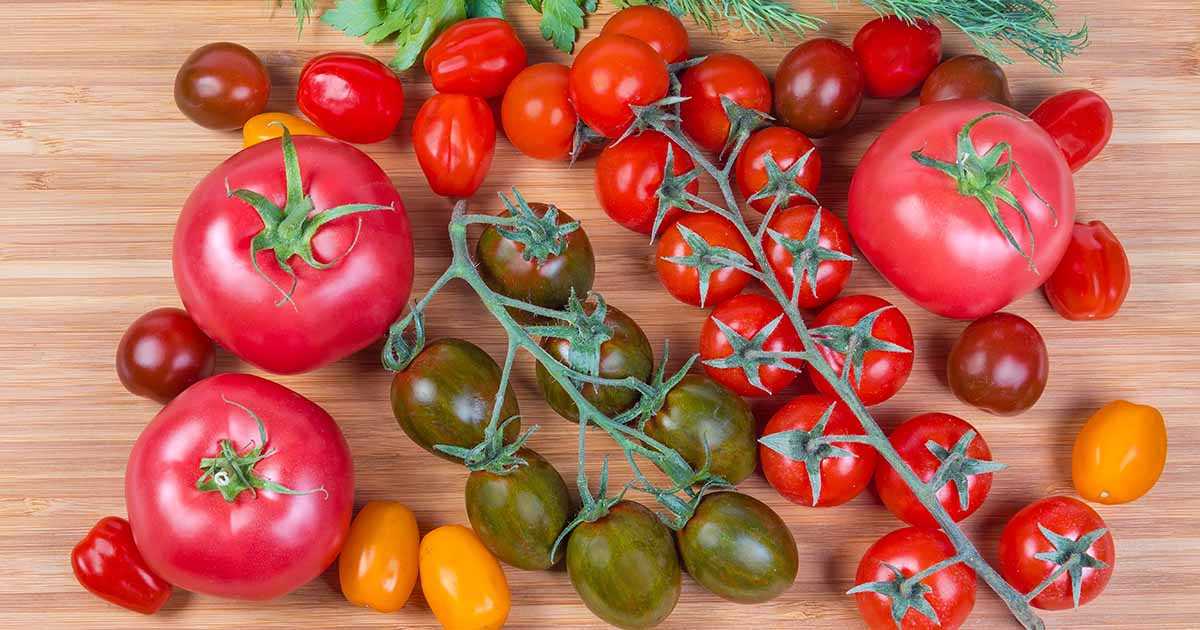
Phytophthora is a common disease that can affect tomato plants, causing significant damage to the crop. However, there are several steps you can take to minimize the risk of infection and protect your tomatoes. Here are some tips:
1. Select Resistant Tomato Varieties
Choose tomato varieties that are specifically bred to be resistant to Phytophthora. These varieties have built-in resistance genes that help them withstand the disease and reduce the likelihood of infection.
2. Rotate Crops
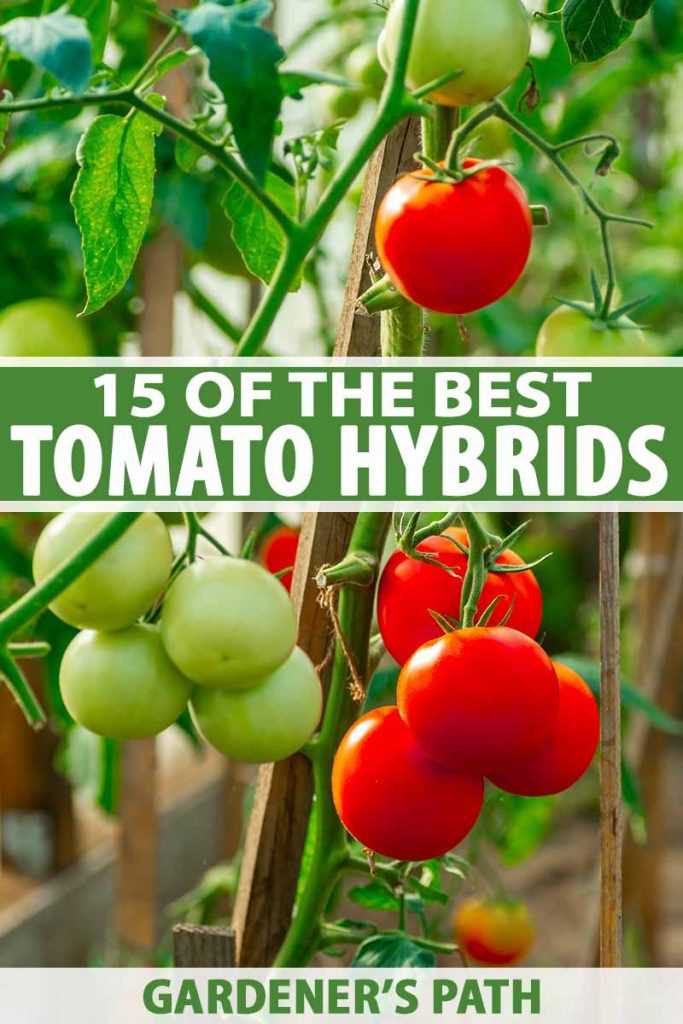
Practice crop rotation by avoiding planting tomatoes in the same location year after year. Phytophthora can survive in the soil, so rotating crops helps reduce the disease pressure by breaking the disease cycle.
3. Improve Soil Drainage
Phytophthora thrives in wet conditions, so it’s important to ensure proper soil drainage. Avoid overwatering and choose well-draining soil. If necessary, you can amend heavy clay soil with organic matter to improve drainage.
4. Avoid Overhead Watering
Watering your tomato plants from below, using drip irrigation or a soaker hose, can help prevent the spread of Phytophthora. Overhead watering can splash soil onto the leaves and facilitate the spread of the disease.
5. Proper Spacing
Provide adequate spacing between tomato plants to promote good air circulation. This helps reduce humidity levels around the plants, which can contribute to the development and spread of Phytophthora.
6. Remove Infected Plants
If you notice any signs of Phytophthora infection, such as wilting, brown lesions on stems or fruit, or a grayish mold on the roots, remove the infected plants immediately. This will prevent the disease from spreading to healthy plants.
7. Clean Garden Tools
Regularly clean your gardening tools, such as pruners and stakes, to avoid spreading Phytophthora from one plant to another. Disinfecting them with a bleach solution or rubbing alcohol can help kill any pathogens that may be present.
8. Practice Good Sanitation
Keep your garden clean and free from debris that can harbor fungal spores. Remove fallen leaves, fruits, and other plant material regularly to minimize the risk of Phytophthora infection.
9. Monitor and Act Promptly
Regularly monitor your tomato plants for any signs of Phytophthora infection. Early detection is crucial for effective control. If you notice any symptoms, take appropriate action immediately, such as removing infected plants or applying fungicides if necessary.
By following these tips, you can minimize the risk of Phytophthora infection in your tomato plants and enjoy a healthy and abundant crop. Remember, prevention is key when it comes to plant diseases, so it’s important to be proactive in protecting your plants.
“Question-Answer”
What are some tomato varieties that are resistant to Phytophthora?
Some tomato varieties that have proven to be resistant to Phytophthora are Oxheart, Mountain Merit, Iron Lady, Legend, Mountain Magic, and Plum Regal.
How long have these Phytophthora-resistant tomato varieties been tested?
These Phytophthora-resistant tomato varieties have been tested over time and have shown their resistance to the disease.
Can I grow these Phytophthora-resistant tomato varieties in my garden without worrying about the disease?
While these varieties have shown resistance to Phytophthora, it is still important to take preventive measures and provide proper care to ensure the health of your tomato plants.
What is Phytophthora and why is it a problem for tomato plants?
Phytophthora is a group of plant pathogens that can cause serious damage to tomato plants. It is a soil-borne disease that affects the roots and stems of the plants, leading to wilting, yellowing, and eventually death of the plant.
Are there any other ways to prevent Phytophthora in tomato plants?
Apart from planting resistant varieties, other preventive measures include using well-drained soil, avoiding overwatering, rotating crops, practicing good sanitation, and using fungicides if necessary.







